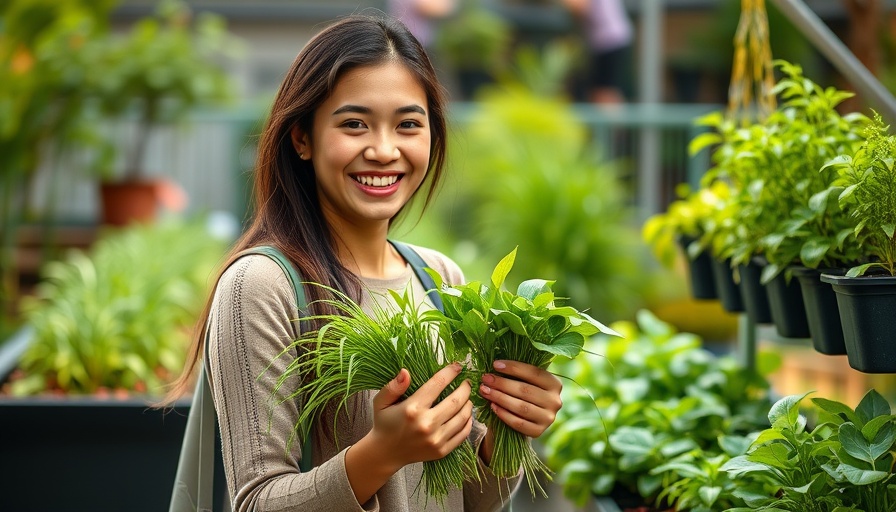
Understanding Weeds as Soil Indicators
Gardening enthusiasts in the Okanagan may often overlook the significance of weeds, viewing them merely as nuisances. However, these resilient plants can provide crucial insights into soil health and conditions. The concept of using weeds as indicators of soil attributes is an intriguing idea, supported by scientific observations highlighting how different types of weeds flourish in specific environments. Weeds can serve as soft signals that help detectives of the soil diagnose underlying issues, like soil pH and nutrient availability.
In 'Your Weeds Aren’t Random—Here’s What They Really Mean', the discussion dives into how weeds serve as valuable indicators of soil conditions, exploring key insights that sparked deeper analysis on our end.
Lessons from Weeds: What They Reveal
For instance, plants like plantain thrive in acidic, compacted soil, while horsetail prefers low pH and waterlogged conditions. The presence of nettles often signals an excess in nitrogen and phosphorus, critical for gardeners to recognize. As it turns out, the vegetation around us can often echo the state of our soil, revealing the hidden story beneath our garden beds. Learning to listen to these botanical hints can make all the difference in nurturing a healthy garden.
Soil Detection: Not All Weeds Tell the Whole Story
However, caution should be exercised, as not all weed varieties provide reliable insights. For example, while dandelions are ubiquitous across various soil types, they fail to specifically indicate soil compaction on their own due to their tendency to grow almost anywhere. This muddles the correlation between their presence and soil conditions, meaning that correlations do not explicitly equate to causation. Thus, while observing weeds, it’s important for gardeners to use them as part of a broader assessment rather than definitive signs of soil quality.
The Principle of the Seed Bank
Understanding the concept of the 'seed bank' is crucial in interpreting the implications of weed presence. The seed bank refers to the natural preservation of seeds, enabling plants to regenerate even under varying soil conditions. For instance, if you observe horsetail in your garden, it alone does not confirm that your soil is currently moist; it might merely reflect the historical conditions sustained by a persistent seed bank. Recognition of this principle allows gardeners in the Okanagan to develop a more nuanced view of their gardens, suggesting that current weed populations might indicate soils that were rich in moisture long ago.
Utilizing Weeds for Soil Assessment
As a result, when weeds like nettles suddenly appear in a garden bed that previously did not support them, it may be a sign of an increase in nitrogen and phosphorus levels—not just a random occurrence. This change can help gardeners pinpoint potential issues, allowing them to make better-informed decisions regarding their soil management practices. As an example, observing an abundance of nettles could encourage you to assess your fertilizer practices, while a scarcity of certain weeds can prompt investigations into moisture levels.
Adapting Gardening Strategies Using Weeds
Equipped with the understanding of how weeds might guide plant care, Okanagan gardeners can adopt adaptive strategies. By monitoring patterns of weed growth, you can gauge the impact of organic or conventional methods in your gardening approach. If, for example, excessive nitrogen fertilizer is the culprit behind an explosion of weeds, it may be time to modify your approach to soil amendments or fertilization schedules. Examining and adapting to these signs can encourage a richer garden ecosystem while emphasizing sustainable gardening practices.
Encouragement for Gardeners: Stay Curious!
The journey of gardening is one of continual learning. Exploring the relationships between various plants—including weeds—and the underlying soil conditions fosters a more engaged and thoughtful gardening experience. Don’t dismiss the weeds in your garden; they might well be your best clues in the quest for optimal soil health! For those hoping to cultivate a thriving garden in the Okanagan, attuning your practices to the messages conveyed by this often-ignored flora could be the smartest step you take.
 Add Row
Add Row  Add
Add 




Write A Comment